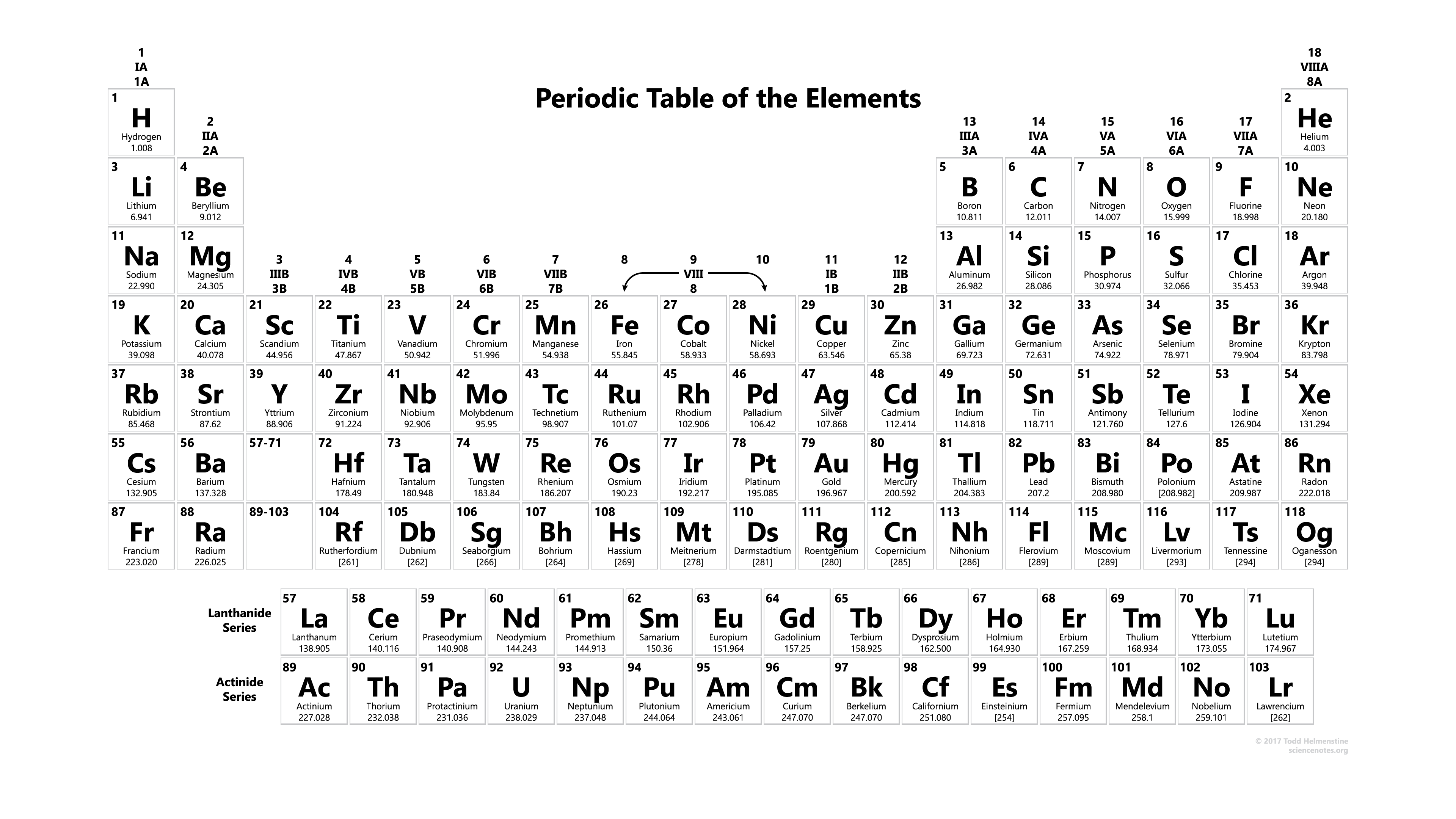Exercise: Fill up the table (Answer shown in red)
| Number of Protons | Number of Neutrons | Number of Electrons | Nuclear symbol |
|---|---|---|---|
| 5 | 6 | 5 | \( \ce{^11B} \) |
| 16 | 18 | 16 | \( \ce{^34S} \) |
| 7 | 7 | 7 | \( \ce{^14N} \) |
| 17 | 18 | 17 | \( \ce{^35Cl} \) |
| 12 | 12 | 12 | \( \ce{^24Mg} \) |
Answer shown in red
Explanation (You may use the periodic table at the end of the post as a reference):
Row 1: Number of electrons should be equal to number of protons (5); Atomic number (5) indicates the element is boron with the symbol B; Mass number is equal to total number of protons and neutrons (\( 5 + 6 = 11 \)).
Row 2: Number of electrons should be equal to number of protons (16); Atomic number (16) indicates the element is sulfur with the symbol S; Mass number is equal to total number of protons and neutrons (\( 16 + 18 = 34 \)).
Row 3: Number of protons should be equal to number of electrons (7); Atomic number (7) indicates the element is nitrogen with the symbol N; Mass number is equal to total number of protons and neutrons (\( 7 + 7 = 14 \)).
Row 4: The symbol Cl indicates an element named chlorine, which has an atomic number 17; Number of electrons should be equal to number of protons (17); Mass number (35) is equal to total number of protons and neutrons, therefore, number of neutrons is \( 35 - 17 = 18 \).
Row 5: The symbol Mg indicates an element named magnesium, which has atomic number 12; Number of electrons should be equal to number of protons (12); Mass number is equal to total number of protons and neutrons (\( 12 + 12 = 24 \)).
